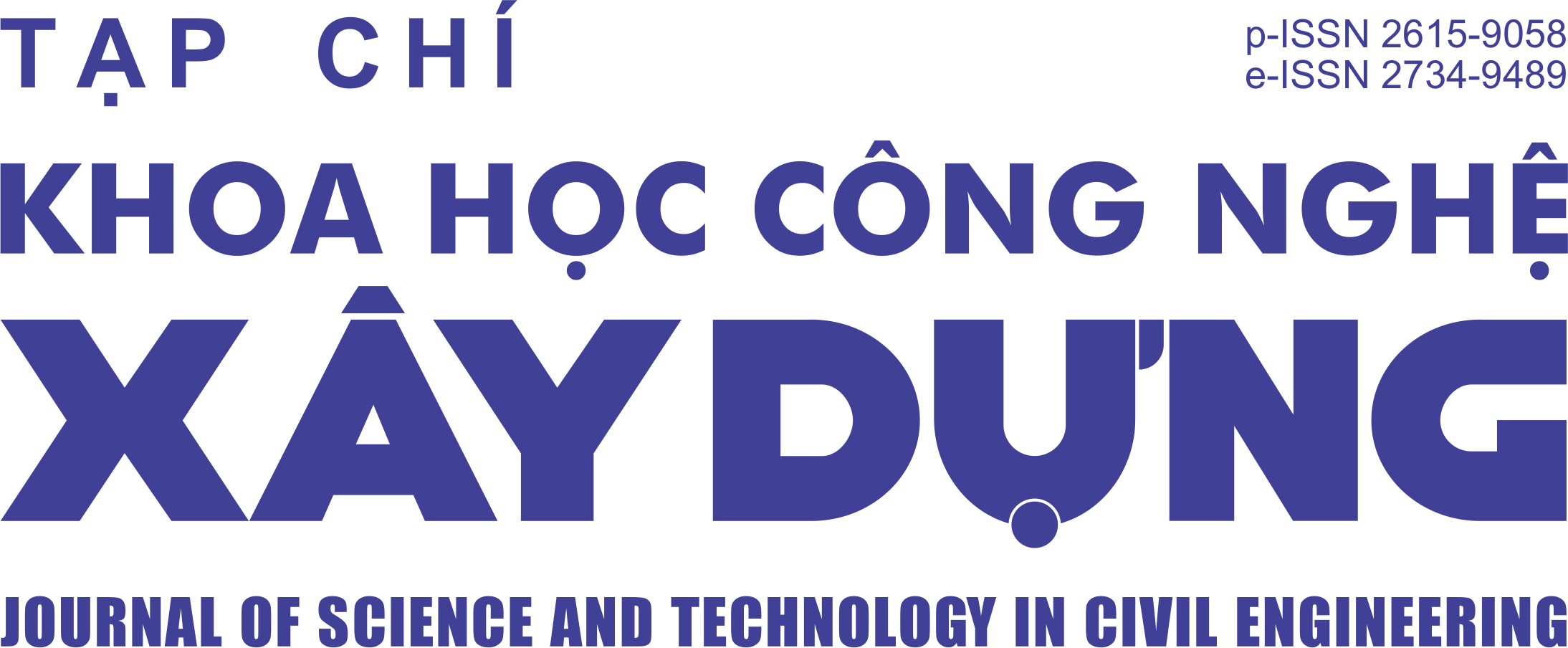An experimental study on flexural behavior of corroded reinforced concrete beams using electrochemical accelerated corrosion method
Abstract
This study investigated experimental bearing capacity of corroded reinforced concrete beams. Six testing beams were made of concrete having compressive strength of 25 MPa, with the dimensions of 1200 x 80 x 120 mm. They were divided into two groups depending of tension reinforcement ratio. Of which, two beams were used as the controls, whereas the other fours ones having tension reinforcement were subjected to corrosion by the electrochemical accelerated corrosion method. After accelerated corrosion, the beams were tested under monotonic loading to investigate their performance. All the tested beams were failed in flexural failure mode corresponding to spalling of cover concrete. Test results showed that as corrosion rate in tension reinforcement increased, the lower cracking load and the displacement at the cracking load were observed. As the corrosion rate of tension reinforcement ranging from 7.5% to 8.3%, it had little effect on the peak load. As the corrosion rate increased further, approximately 10.8% and 14.1% in this study, the peak load decreased significantly. The higher the corrosion rate, the lower the displacement of corroded beams. Moreover, as corrosion rate of tension reinforcement increased the number of concrete cracks and their spacing reduced, and the width of cracks was generally larger.
Keywords: reinforced concrete beam; electrochemical accelerated corrosion; corrosion rate; load-carrying capacity; displacement; concrete cracking.
Received 08 January 2019, Revised 16 January 2019, Accepted 17 January 2019
Downloads
Copyright (c) 2019 National University of Civil Engineering

This work is licensed under a Creative Commons Attribution-NonCommercial-NoDerivatives 4.0 International License.
1. The Author assigns all copyright in and to the article (the Work) to the Journal of Science and Technology in Civil Engineering (JSTCE) – Hanoi University of Civil Engineering (HUCE), including the right to publish, republish, transmit, sell and distribute the Work in whole or in part in electronic and print editions of the Journal, in all media of expression now known or later developed.
2. By this assignment of copyright to the JSTCE, reproduction, posting, transmission, distribution or other use of the Work in whole or in part in any medium by the Author requires a full citation to the Journal, suitable in form and content as follows: title of article, authors’ names, journal title, volume, issue, year, copyright owner as specified in the Journal, DOI number. Links to the final article published on the website of the Journal are encouraged.
3. The Author and the company/employer agree that any and all copies of the final published version of the Work or any part thereof distributed or posted by them in print or electronic format as permitted herein will include the notice of copyright as stipulated in the Journal and a full citation to the Journal as published on the website.







